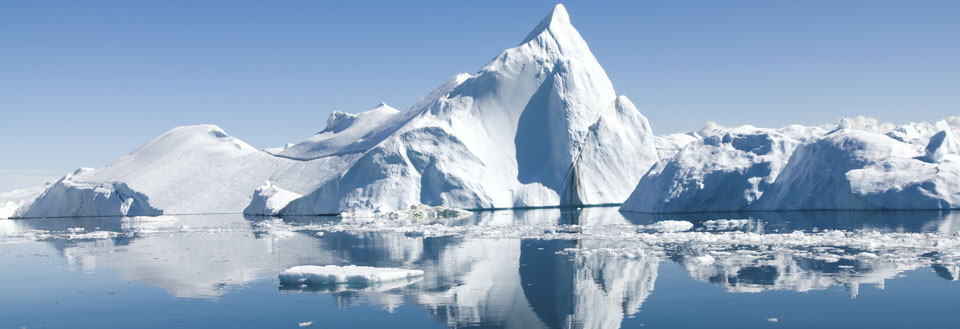On this great island in the far north you will meet a people and an environment different from anything else in the world. The main part of the island is permanently covered by snow, but on the coasts you can explore vast areas of tundra, enormous blocks of ice - and the sprinkling of the many small human communities. This is where Greenlanders preserve their ancient traditions and culture.�
Kalaallit Nunaat
Nuuk (Good Hope)
2,175,600 sq km
Greenlandic and Danish
Evangelical Lutheran
56,309 (2000)
Self-governing Danish territory
Greenland is the world's largest island, and a permanent layer of ice covers most of this enormous land - whose northernmost point is only 700 km from the North Pole. The inland ice is 3300 metres thick at its deepest point, and the country has more than 40,000 km of coastline.�
Greenland has two basic seasons: summer and winter. During the winter months you can experience the natural scenery normally associated with the country, but Greenland is also interesting during the summer - when you can go hiking in the mountains and sailing along the coast.
�
Lonely Planet Iceland, Greenland & the Faroe Islands
Danish krone (DKR), 1 krone=100 øre.
The inland ice doesn't exactly swarm with Internet cafes, but you can find one in Nuuk and Sisimut, or you can ask in the local library.
You tip about 10 per cent in restaurants, and you can also tip your tour guide, if the tour has been extraordinarily good.
Greenland is divided into three time zones:
When it is 12.00 in England, it is 08.00 in the Nuuk area.
When it is 12.00 in England, it is 07.00 in the Qaanaaq area.
When it is 12.00 in England, it is 10.00 in the Ittoqqortoormiit area.
Length: metre
Weight: kilogram
Temperature: centigrade
Volume: litre
�
It is prohibited to photograph in churches during sermons. It is always polite to ask the Greenlanders' permission, before photographing them.
The tap water is safe to drink in all of Greenland, and you can also drink the water in rivers and lakes.
220V/50 Hz.
Common good behaviour is expected in Greenland.
Shops are open 9.00 to 17.30 (Monday to Thursday), 9.00 to 19.00 (Friday) and 9.00 to 13.00 (Saturday).
Banks are open 10.00 to 16.00 (Monday to Friday).
Offices are open 10.00 to 16.00 (Monday to Friday).
Traditional Greenlandic cuisine consists of freshly killed fish, seals and walruses. Traditionally the newly slaughtered animals more tender parts - such as heart, kidney and eyes - were held in reserve for the hunter at the top of the hierarchy. If you do not enjoy warm intestines, but prefer your dead creatures burned, then you can have cooked fish such as salmon, codfish, Greenland halibut, seal, whale and many others. There are not many fruits and vegetables, and those you can get in the supermarkets are rarely very fresh because of the long distances they travel.�
Greenland isn't the best place to go if you are disabled, as the rough landscape demands a good physique if you really want to experience the country at close range.�
New Year's Day, 1 January
Twelfth Night, 6 January
The Worker's International Day (half a holiday), 1 May
Constitution Day, 5 June
Greenland's National Day, 21 June
Christmas, 24 December
Christmas Day, 25 december
Boxing Day, 26 december
New Year's Eve, 31 december
Easter, March or April
Whitsun
Ascension Day
General Prayer Day
You can pitch your tent anywhere in Greenland, but don't expect any camping sites as in the rest of Europe. Most have no facilities at all, but others have workmen's huts with bathroom facilities installed.
Greenland has everything from large, international hotels to small, family-run hotels with only a few rooms. It is expensive to spend the night at a hotel in Greenland.
In the summer, you can find a hostel in practically all towns, and often it is schoolrooms that are rented out to tourists. They all have access to kitchen and bath, but that is all that can be said in general about them.
Seamen's Homes
Seamen's Homes only exist in a few towns, and the rooms are usually in good condition. The food served in seamen's homes is often okay - and cheaper than in the hotels.
�
There are domestic helicopter flights between the major cities, but it is fairly expensive to fly in Greenland
There are city buses in the major cities, but no long distance buses.
There are no trains in Greenland.
You'll only find taxis in very few places in Greenland.
There isn't much use for a car in Greenland.
Boat services are very well developed in Greenland, and you can sail from town to town in everything from small dinghies to large passenger ships - depending on your mood and wallet.
�
Dog sledges are commonly used by Greenlanders when crossing the inland ice. As a tourist you can rent a sledge with dog pack and a driver.
�
